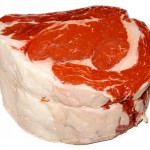Testosterone has a number of roles in both genders beyond affecting sex drive, influencing mood, muscular growth and spacial awareness. While it’s effects in women remain under-rated, it is men that exhibit the most obvious reactions when testosterone drops. These include low sex drive, depression and poor mood, reduced mental function, increased bodyfat and decreased facial hair.
Laboratories set the reference range for testosterone in men at 11-33 nmol/L, a huge range that includes the expected values from 17-year-old to 70-year-olds. And herein lies a problem; so often an athlete in their late twenties is assured their testosterone counts are ‘OK’ because they sit just within the reference range when, at 13 nmol/L, they are barely half of what they should be. And that’s without getting bogged down in discussions of SHBG levels, SHBG:tesosterone ratios and ‘free T’.
I see low testosterone counts a lot of the time. It has been suggested that these consistently low testosterone counts found in young men are due to the pervasive influence of xeno-estrogens in society. These chemicals (found within cellophane, mass-market meat, cosmetics and many household products) act like the female steroid hormone estrogen inside the body and a number of experts blame them for the ‘femininization’ of men in modern society.
I have no doubt that these xenoestrogens do have a detrimental effect on the hormonal balance in males. However, the marked improvements that we are able to achieve between one blood test and another suggests that this cannot be one of the major factors. Other factors must be at play to suppress production of this important hormone.
While it is accepted that average testosterone levels have dropped in the last 30 years, so too has the levels of fat in our diet. Intake of saturated fat in particular has never been at such low levels. This results from the campaign of food manufacturers who accuse this type of fat of a myriad of undesirable health effects despite a total absence of evidence (the reasons for this are political and financial, not nutritional). The problem is that saturated fat is required to stimulate the production of cholesterol, the base compound from which testosterone is manufactured.
The evidence shows conclusively that this removal of saturated fat from the diet can have a huge impact on testosterone production, especially when fat levels drop below 20% of overall calorific intake (Clinton et al, 1997; Gromadzka-Ostrowska, 2006). Low-fat, low-calorie and vegan diets almost always come in well below this level. With several research papers demonstrating a link between testosterone-induced behaviour and attractiveness to females (Enstrom, 1997), the cruel remarks made by meat-eaters about vegan men appear to have some scientific basis.
It is particularly relevant that low-fat diets are invariably low-meat diets. Beyond low cholesterol availability, this type of intake also ensures a low intake of zinc. This important mineral, a component of more than 80 enzymes in the human body, has an important role to play in supporting healthy levels of testosterone while reducing the conversion to DHT, a testosterone derivative that is implicated in male pattern baldness when it reaches excessive levels. Zinc supplementation doubles testosterone levels in marginally deficient men (Prasad et al, 1996). Zinc is important.
One area that researchers seem to have overlooked is the impact of stress and adrenal function on the testosterone levels. A source of a number of important steroid hormones, the adrenal glands are the secondary producer of testosterone after the testes and the primary producer of DHEA; this is the precursor that the testes use to manufacture testosterone from. Low DHEA normally correlates with low testosterone. The adrenals also produce cortisol, a steroid hormone that competes for binding with testosterone. When this glucocorticoid is released in higher quantities because of stress, the impact of testosterone becomes blunted (Kapolsky, 2004). Stress also reduces the testosterone-producing activity of the testes by turning off the secretion of Luteinizing Hormone that would otherwise stimulate them into action. The take home message here is that stress has serious consequences in the testosterone balance and that concentrations of this male hormone will plummet when the adrenal glands are not adequately cared for.
Suitable sleep patterns, liver function, thyroid balance can also have an impact on testosterone production. However, the majority of my clients will see their testosterone counts soar simply by employing a change in diet and providing care for their adrenal glands.
As with almost all imbalances that occur regularly, there is always a number of contributing factors that need to be looked at. Some are less obvious, many are screamingly obvious, some are less so. In any case, the standard motto applies: providing the dietary balance that nature intended still represents the first and most important step in ensuring your testosterone levels remain where nature intended. And that you won’t find yourself crying in front of 27 Dresses.
References:
Clinton SK, Mulloy AL, Li SP, Mangian HJ, Visek WJ. Dietary fat and protein intake differ in modulation of prostate tumor growth, prolactin secretion and metabolism, and prostate gland prolactin binding capacity in rats. J Nutr, 1997 Feb;127(2):225-37.
Enstrom DA, Ketterson ED, Nolan VJR (1997). Testosterone and mate choice in the dark-eyed junco. Animal Behaviour, 1997, 54, 1135–1146.
Gromadzka-Ostrowska J (2006). Effects of dietary fat on androgen secretion and metabolism. Reprod Biol;6 Suppl 2:13-20. Kapolsky R (2004). Why Zebras Don’t Get Ulcers. St Martins Press.
Prasad et al (1996). Zinc status and serum testosterone levels of healthy adults. Nutrition. 1996 May;12(5):344-8.







Leave a Reply